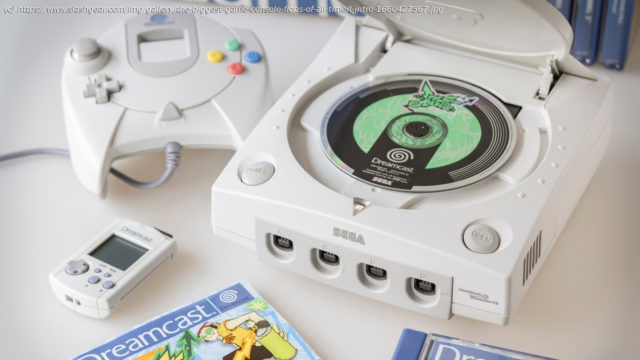The video game industry hasn’t been all fun and games. These consoles were the biggest flops of all time.
In the not-so-distant past, when video games were still young, the only place you could play them was at an arcade. You’d ride your bike there after school, or on the weekends, with a pocket full of quarters and a head full of dreams. You’d while away the hours traversing pixelated dungeons, and fighting poorly-rendered aliens. Then, something wonderful happened.
The first commercial at-home gaming console was invented in the form of the Magnavox Odyssey (via Computer Museum of America). The technology enjoyed an initial burst of popularity, spawning competitors like Atari, but the future of home video games wasn’t certain. Then companies like Nintendo and Sega, and later Sony and Microsoft, found the right formula, and transformed video games into a seemingly permanent part of the cultural landscape.
That doesn’t mean that every console created by those companies, or their competitors, has been a hit. For every success, there have been a handful of failures, pieces of tech which were either ahead of their time, wildly misguided, or mismanaged and doomed to the trash heap. Some of these you’ll likely remember, others have been forgotten to time, and that might be for the best.
By the late ’80s, video game systems had found their footing. The Nintendo Entertainment System, for instance, was released in 1983, and has sold nearly 62 million units worldwide (via Nintendo). As a result, players had become familiar with the cartridge-style games common to that and other consoles.
It’s curious, then, that in 1987, Worlds of Wonder took an entirely different approach. Its console, the Action Max, tossed away the familiar cartridges in favor of games built on VHS tapes. The console connected to your television via the VCR, and utilized a light gun to interact with the game (via Video Game Console Library).
Five games were produced, each of which played out on the tape, and continued toward their climax regardless of the player’s actions. The only real evidence that the player was contributing at all was a flashing sprite which appeared each time the light gun’s trigger was squeezed.
From a certain point of view, the VHS game model was innovative, offering the improved graphics of a live-action movie compared to the pixelated worlds and characters of their competitors, but it lacked interactivity. The game loops were repetitive with little to no means of altering gameplay. That’s a risky thing to sacrifice, considering that gamers are looking for interactivity above just about everything else. Consequently, the Action Max tanked.
Home consoles took games out of the arcade and into the living room, but it wasn’t until 1989 when things truly went mobile. Early that year, Nintendo launched the Game Boy, a system that went on to spawn plenty of descendants, some of which are alive and well today. Hoping to maintain its foothold in the gaming market, Atari launched its own handheld device in the fall of 1989.
The Lynx, as it was called, should have been a sure thing. It boasted a full-color backlit display, which stood in stark contrast to the monochrome display of the Game Boy. It also had the ability to flip the screen if you turned it upside down, allowing left-handed gamers to play with the d-pad on the right side, and the buttons on the left. Not to mention, the Lynx ran in 16-bit while Nintendo was still handing out 8-bit games (via Engadget).
While the Lynx had the Game Boy beat in terms of pure functionality, Atari made the same kind of mistake as the Action Max, leaning too heavily on form factor and not heavily enough on actual gameplay. The Lynx had limited titles, and it couldn’t compete with such emerging darlings as the «Super Mario» series. It also absolutely chewed through batteries, making the overall experience less enjoyable even if it was prettier. Despite its superior tech, it simply didn’t stand a chance.
The Commodore 64 is most well-known today as an old-timey computer, but it was a good gaming system in its own right. Users could insert games, and play them on the C64 by utilizing the keyboard and other peripherals (via Gizmodo). Then, in 1990, the company set its sights on the home gaming market.
The Commodore 64 Games System was largely a reskinned C64 with a joystick in place of the keyboard. It played all of the same games as the original C64 with the notable exception that you couldn’t play any game that required the keyboard. What’s more, if you wanted to play games on the Commodore, you could get the computer for about the same price as the Games System, and enjoy the added functionality (via Old-Computers.com). Some games were produced specifically for the Games System, but they were sparse. That meant Commodore was competing with the NES and the Sega Genesis, both of which had dedicated games titles and were purposely made for home gaming.
Perhaps Commodore thought it was a worthwhile risk, given that it didn’t have to go through the trouble of constructing a new device to dip its toes in the gaming pool. In any event, the experiment failed, and the C64 Gaming System sold less than a quarter of the 80,000 units produced before it went belly up.






